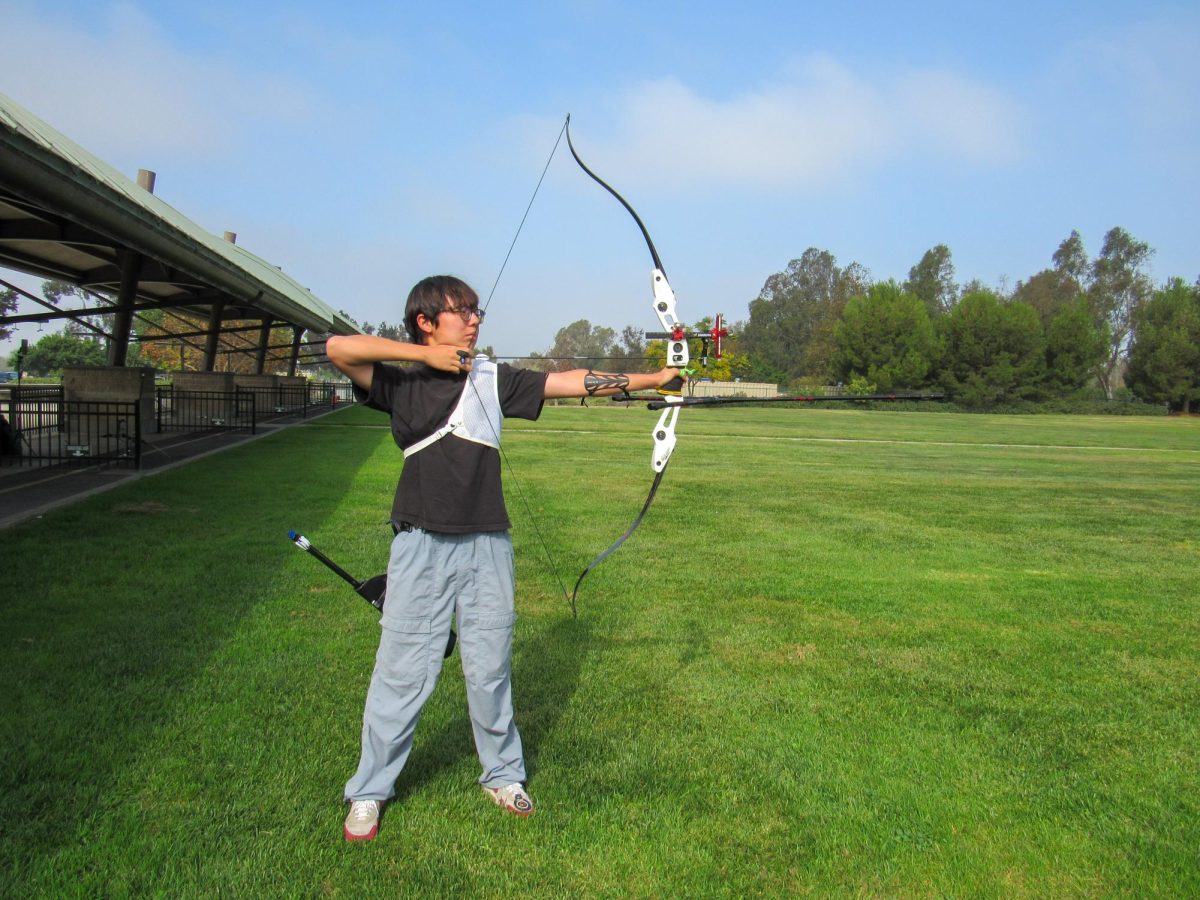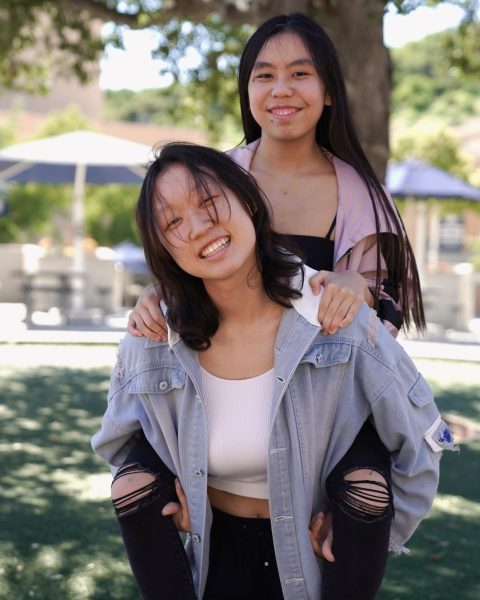Sixty meters away from the target, sophomore Ryan Koo smoothly draws back his arm and carefully aims for the center. In one fluid motion, the arrow soars through the air and lands dead center on the bullseye–-a step closer towards his dream of winning gold.
Even though Koo picked up archery only two years ago, he has already achieved remarkable success. In February, he claimed third place at the USA Archery Indoor Nationals. Recently, he also placed fifth at the State 2024 Pacific Coast Championships, competing against 46 of the best archers in his age division.
“It’s not much stress, and it’s really fun,” Koo said. “There’s just so many things to try and improve on—changing different components of your form or position to make the arrow more accurate. And it feels really good when the arrow hits the 10.”
Koo’s success stems from his training regimen, consisting of two to three hour long practice sessions for three days a week. During the summer before his recent state competition, he intensified his routine by practicing four to five hours a day for five days a week.
Although he was first introduced to archery for fun after a friend’s recommendation, he started to seriously pursue it after visiting an archery center in Korea and meeting driven archers. Since then, he has competed in a total of 10 major competitions over two years.
Every time he trains, Koo keeps an archery notebook with him to track his progress and areas of improvement, a habit that has fueled his consistent growth. The following quote was translated by Koo.
“I’m really surprised about how much effort he put in,” said coach Hyangsoon Seo, who spoke to us with Koo translating. “At the start, he was shooting a lot with force, but now he’s shooting smoothly like a good archer.”
While it may seem like an archer just has to stand and shoot, there are many factors Koo has to consider.
Weather conditions play a significant role in his strategy; for instance, rain and wind can affect arrow trajectory and push it off course. Koo mentioned how he observes flags at the range to gauge wind direction and adjust his aim accordingly. Though often overlooked, the physical aspect of archery is crucial for consistent shooting. Pulling back a bowstring requires significant strength, especially as archers increase their bow’s draw weight to make their shooting steadier. Koo’s draw weight is 37 pounds, which means he has to pair archery practice with weight training.
However, accuracy is still the name of the game in archery; the minor details are what differentiate a bullseye from a miss. Koo had to spend months working on his concentration to consistently shoot a perfect shot under heavy pressure.
“Sometimes you’re trying to fix your position, and no matter how much you try, it won’t get fixed,” Koo said. “It takes time and you have to practice a lot over many days because you can’t fix something in just a day.”
In a sport that requires much precision and attention to detail, challenges are inevitable. Koo often adjusted his mindset during games to stay focused on his technique rather than the outcome.
“I would score what I shot, but the score would just keep going down,” Koo said. “So during competitions, I have to think about my position rather than my score, because if you’re thinking about the score, that’s just putting yourself under the pressure to shoot badly.”
Koo believes that one of the strongest aspects of archery is the community it fosters. Even as an individual sport, the support and camaraderie among his competitors drives him to improve.
“You have friends that you can shoot with, but also compete with,” Koo said. “So if there’s competitions, we would go to a restaurant and eat. It’s more like a big hangout instead.”
Koo plans to continue archery throughout high school and possibly into college. For his next competition in January, he only has one wish: to achieve nothing less than gold.
While he doesn’t plan to pursue archery as a career, the lessons it’s taught him will stay with him for life.
“Just like how you have to think about the position and not the outcome of your score in archery,” Koo said, “It taught me that you should focus on the process and not the results of things.”





















































